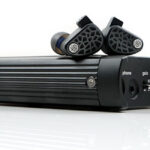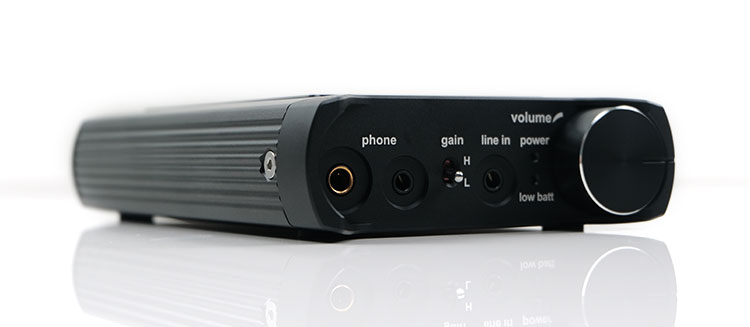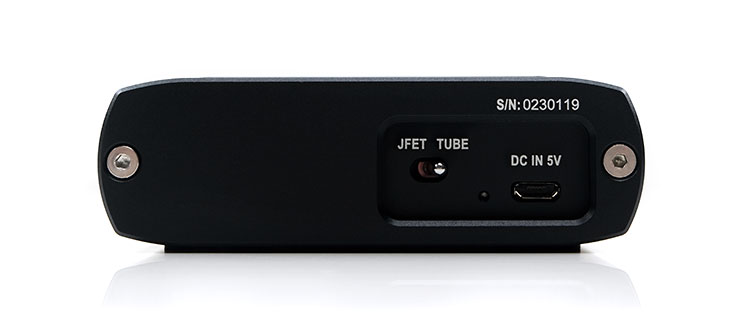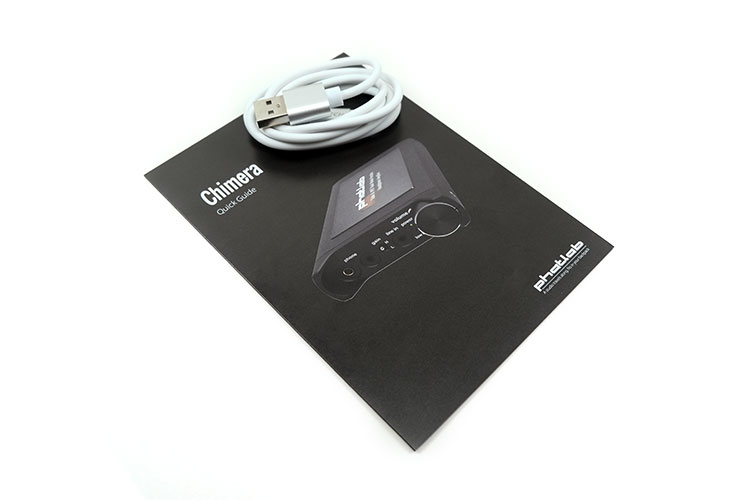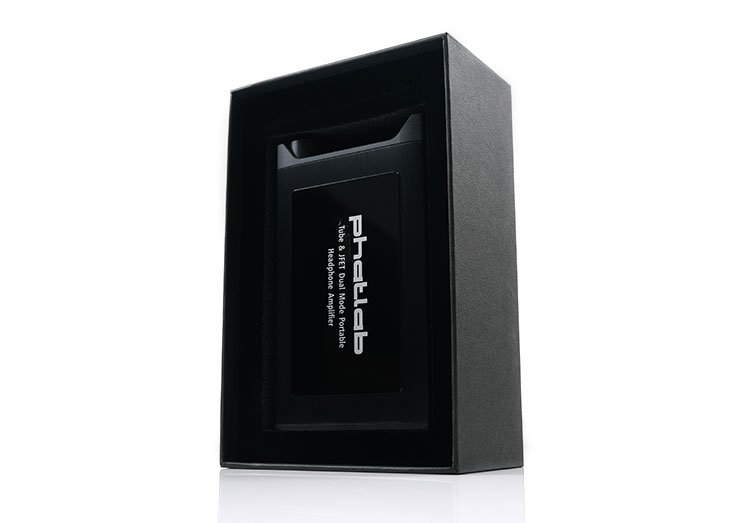The Phatlab Chimera is a JFET/Tube dual-mode portable headphone amplifier capable of up to 1W of PO output power. It is priced at $895.09
Disclaimer: The Phatlab Chimera sent to us is a sample unit in exchange for our honest opinion. We thank the team at Phatlab for giving us this opportunity.
You can find out more about portable amplifier products reviewed on Headfonics here.
Note, this 2-page review follows our new scoring guidelines for 2021 which you can read up on here.
In this day and age, you need to bring something different to the table if you are going to launch a portable amplifier.
Tubes seem to be the way to go and despite Cayin introducing some remarkably well-performing tube DAPs such as the N8 and N3 Pro, the concept of a ‘timeless’ portable tube amplifier still resonates strongly with audiophiles.
So much so that Cayin launched the C9 this year and Oriolus did the BA300S a few years ago and both had a bit of traction. Before either of them, however, was ALO Audio with their CDM and Phatlab with the Sassy in 2016.
The Sassy evolved into two paths, the Class A Single-ended Triode Phantasy and the one we have for review here today, the dual-mode Chimera portable tube amplifier priced at just under $900.

Tech Highlights
The Chimera was launched in 2020 so technically their claim to be the first dual operational solid-state and tube mode portable amplifier is accurate. However, since then Cayin launched its high-end C9 in 2021 which also delivers a dual-mode system though both amps operate a little differently, (see page 2 select comparisons for more detail).
You can also order the Chimera with an integrated ES9028PRO DAC for a slightly higher price to make it a complete one-stop solution but we preferred to go with a purely analog amplifier for longevity purposes.
Dual Mode
The amplifier-only Chimera circuit is based around a switchable dual-mode JFET or transistor-based design combined with a triode or tube-based alternative output.
The Chimera uses a dual Jan 6418 subminiature tube configuration. This is a filament-type low power consumption pentodes used as triodes in the circuit. That does mean the potential for ping and Phatlab does discuss in the manual ways to avoid that during use. The tubes are not easily rollable as they are normally soldered or hard-wired to the circuit.
JFET is usually considered advantageous for small signal amplification builds with a generally high input impedance and a low-noise performance. This is a voltage-controlled gain design picked by Phatlab for its enhanced linear curve and lower distortion levels than traditional SET.
It is not the coldest sounding solid-state mode either. In fact, Phatlab picked the JFET topology for a sound signature that they felt was quite natural or smooth in character.
Performance Numbers
The output power of the Chimera is not bad actually and sits somewhere in between the BA300s and the C9 with both 4.4mm and 3.3mm outputs. It covers both ends of the scale quite well with a 30Ω loaded 300mW per channel via 3.5mm and up to 1W on a similar load for 4.4mm.
For those that do need a bit more gain, the Chimera does have a dual-gain setting with a very respectable 14dB swing between 3.5mm low-gain and 4.4mm high-gain.
Just one important caveat and that’s the line-in which is a fixed voltage 3.5mm SE input and with no 4.4mm balanced equivalent. This is not a ‘true balanced’ topology but there is a substantial boost in output voltage for the 4.4mm balanced output.
We only have a single set of numbers for SNR at >110dB (weighting unknown but we presume high-gain A-weighted). This is quite normal for me for dual-mode operational amplifiers if we base it on the tube performance as the lowest common denominator. For example, the C9 high-gain A-weighted for its tube output is 112dB and 111dB for the lower-powered BA300s.
Critically, for IEM users the output impedance of both the 4.4mm and 3.5mm sockets are sub-1Ω meaning no unnecessary impedance skew though the recommended load rating is 30-600Ω.
Design
Dimensions
I think ‘Phat’ is an apt description here. The Chimera is not the longest tube portable amplifier we have here at the office, that accolade goes to the C9. It is quite distinctive in its dimensions, however.
It is actually about the same length as the ALO Audio CDM so not small by any stretch of the imagination but quite wide, wider than the two aforementioned amplifiers, and bigger by some margin over the pocket-sized BA300s.
For its size, the Chimera does feel surprisingly light at 370g with some modern DAPs such as the Sony 1Z weighing considerably more. This is a portable amplifier that should be workable for single-handed use but with enough space to easily stack a source device on top or below.
Finishing
For the finishing, the unit is black with a classy, brushed aluminum finish on top, and a matte black aluminum panel design for the front, rear, and base plates.
The top panel also has a smokey perspex plate with the relevant branding as well as a small transparent window right over the tubes so you can see that orange glow when turned on. The side panels have a mix of brushed aluminum and a ribbed finish that gives it a bit more grip when handling.
You have an extended guard protection plate to protect the controls and give it a little bit of additional design identity to the front. The rear plate is slightly recessed around the I/O region also for protection purposes. The unit also comes with what looks like four small round grippy 3M feet on the base out of the box which is a very welcome addition.
The curving on the Chimera is immaculate. The edges might look sharp from the pictures but I can assure you they are not. This is a very comfortable design in your hand and unlikely to do any damage to stacked source gear.
I/O
Front Panel
The I/O on the Chimera will differ slightly if you buy the version with the integrated DAC. However, the front panel is the same on both versions, and it is pretty much your classic portable amplifier I/O options with the bonus of a 4.4mm pentaconn jack port to the far left.
Aside from the gold plated 4.4mm you get a 3.5mm TRSS SE output, SE 3.5mm line-in, high/low gain switch, and a fairly hefty potentiometer, (volume control and power on/off). You also get a power and battery life indicator right beside the volume controls.
Because of the width of the Chimera, the spacing between the sockets is excellent. You should have no problems fitting wide barrel jacks into the front panel and nothing should blocking each other once all hooked up.
My only caveat is the smoothness of the volume dial which makes it slightly slippery to operate if you have a bit of sweat or moisture on your fingers. The guard does an excellent job of protecting it from accidental bumps that could end up blasting your ears out but it also means you only have about half the dial exposes for controlling with your hands.
Rear Panel
The rear panel for the pure analog version is quite simple but with that all-important dual-operational mode JFET and tube switch in a recessed bay to the right. The DAC version will have additional digital input controls to the far left in a similar bay.
The switch does have a fair bit of resistance which I appreciate as it provides a level of protection against accidentally switching between the two. Just to note though both the JFET and tube stages are active when you power the amp on so there is no warm-up time or delays when switching between either mode.
The final Chimera input option is a DC In 5V micro-USB for charging the internal battery. You can charge with a dedicated 5V charger or via a USB port on your laptop depending on your preference.
Battery Life
Phatlab has not revealed the actual battery configuration inside the Chimera but the actual cycle looks competitive at 10 hours for the pure analog version. It looks less compelling for the integrated DAC version at just 5 hours though not inconsistent with some competing configurations.
As a point of reference, the CDM lasts for 7 hours running as a pure amplifier on a triple 18650 configuration and 5 hours if using the DAC same time. The Cayin C9 also uses swappable 18650’s and hits around 9-9.5 hours with the use of the tube operational mode. It can reach 15 hours though when the tube mode is turned off.
Both Chimera versions require a charge time of 3 hours and here I wonder if a USB-C port with a fast-charging system would have been the better choice. Given this was launched some time ago, I know some micro-USB designs were still floating around, but I hope any new version will include a quick charge system.
Packaging & Accessories
The Chimera packaging kind of reminds me of a decent quality Asian DAP retail box with its compact and understated black printed cardboard outer and black foam contoured inner. No doubt it’s nicely designed with plenty of protection for any potential knocks that could damage the tubes or external body.
Inside, you get the amplifier on display on the top level, and underneath you get a few basic additional extras including a very short white micro-USB cable for charging and a fairly instructive manual.
I would have liked to have seen a few additional 3M replacement feet included and a short 3.5mm IC connector for the line-out compatibility but otherwise, there is not much more you can really include here.
Sound Impressions
Summary
With two operational modes, JFET and tube, the Chimera can deliver two well-defined and different sound signatures. How you appreciate one over the other will largely depend on personal preference and headphone/monitor synergy.
Neither outputs are what I would define as cold, clinical, or traditional solid-state in their presentation. If anything, the tube output is the brighter of the two and the JFET is the smoother operator. However, the tube ‘brightness’ description is more sweet than harsh so it’s very enjoyable rather than brash or edgy sounding.
Of the two, the tube output for me is also the livelier with a bit more midrange spaciousness, headroom, and a low-end that has a bit more body. I do have to caveat, however, that the bass body aspect is more obvious with a good open-back headphone rather than a monitor.
Overall, the PRaT and fun factor are stronger with the tube output but the better balance might just be with the JFET input for trickier or bright headgear pairings. Easily driven but often hot-headed gear like the AKG K812 do much better with the JFET’s slightly laid-back treble performance.
With more subdued pairings, something like the HD650, I did crave a bit more oomph from the very disciplined yet smooth-sounding JFET. There was more than one occasion that I found myself pushing up the volume on the JFET fresh from the tube output due to its more neutral weighting from the bass through to the mids. Here, the livelier tube output was more suitable.
Timbre
The JFET timbre is neutral to natural with a very mild bump in warmth in the low-end from most of the tested monitors and headphones. One thing I did note is a comparative reduction in bass bloom over the tube side so it does feel the more linear of the two with less of an obvious fundamental underpinning the instrumental timbre.
However, the control is good and does not interfere or bleed too much into the smooth midrange instrumental and vocal timbre. The treble is also comparatively relaxed so it’s not as airy in tone as the tube output and that lack of aggression is a factor in the upper mids timbre coloration.
JFET voicing and midrange instruments are a little more rounded and warmer and may seem less lively and in your face. The kind of sound that tends to gel well with headphones that might already have a lively midrange or treble and you do not necessarily want to enhance too much.
The tube timbral output is sweeter, perhaps more dynamic in its presentation but I suspect due to the enhanced clarity in the treble which gets turned up a notch, and a bass fundamental that gets a bit more body and forwardness.
Mids here are more prominent, vocal harmonics get a little odd-harmonic lift, and percussion is injected with a bit more bite from the stronger treble presence. The whole presentation can be neatly described as vivid and lively.
Staging & Dynamics
The Chimera tube output is the more expansive of the two modes in all directions but particularly width and height. Staging depth is a little more nuanced on monitors but more pronounced with the 4.4mm output using headphones such as the Ananda.
Through all pairings though the immediate changeup is the midrange forwardness. On the JFET output, it sounds quite neutral in positioning whereas the tube imaging is much more forward. there is a stronger left-right separation on the tube stage compared to the comparative center focus of the JFET.
Treble follows a similar pattern. The tube output is airier with a bit more headroom, the treble more articulate and forward. On the JFET again you get that balanced and more neutral positioning that will seem comparatively more relaxed.
I have to admit I like the more dynamic thrust of the tube output with the majority of the pairings tested, (see page 2 for synergy). The Chimera seems to do better on tube output filling out the staging quality, especially with open-backs like the Ananda.
The JFET output, however, has a blacker background, less prone to ping, and a better choice also for intimate staging and positioning requirements.
Click on page 2 for pairings and select comparisons


